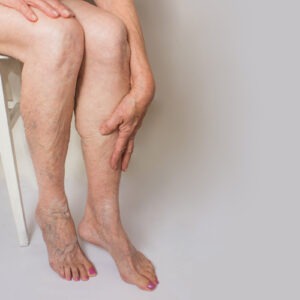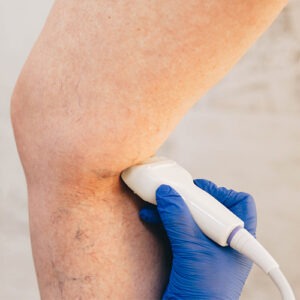When making travel plans, there are a lot of details to keep in mind. Between selecting your destination and planning your itinerary, you may not consider the impact that the travel alone could have on your health. Your travel plans could put you at risk of developing deep vein thrombosis (DVT). It’s important to know the symptoms of DVT, and the steps you can take to reduce your risk.
Deep Vein Thrombosis Explained
Venous thrombosis is a medical condition where a blood clot forms in a vein. Thrombosis can occur anywhere in the body. A deep vein thrombosis happens in the “deep” veins of the pelvis, leg or thigh. DVT is the most common form of thrombosis.
Deep vein thrombosis is a potentially dangerous condition. If not promptly treated, complications can occur. If the blood clot breaks free, it is called an embolus. The embolus can enter the veins and travel. If it becomes lodged in the lungs, it becomes a pulmonary embolism (PE).
Symptoms of Deep Vein Thrombosis
 If you have unexplained pain in your leg, it is essential to stay on guard for additional symptoms. Those symptoms include the following:
If you have unexplained pain in your leg, it is essential to stay on guard for additional symptoms. Those symptoms include the following:
• Unexplained pain or tenderness in an arm or leg
• Swelling
• Warmth in the swollen area
• Redness
If you suspect DVT, you should contact your healthcare professional. If your doctor suspects DVT, there are additional tests needed to confirm the diagnosis. Tests to diagnose or rule out DVT include:
• Compression ultrasonography — Sound waves generate a picture of the inside of the leg
• Contrast venography — A dye is injected through a catheter to make the vein visible to an X-ray
• Magnetic resonance imaging (MRI) — Magnetic energy produces detailed pictures inside the body. MRI is useful for those who are pregnant, are allergic to the dye or have reduced kidney function
• D-dimer — A blood test that measures the amount of D-dimer in the bloodstream. D-dimer levels often increase in people with DVT or PE
• Computed tomography (CT scan) — Specialized X-rays that produce a cross-section of images to a computer
Risk Factors for DVT
Some medical conditions are known to increase your risk of developing deep vein thrombosis. The predisposition for developing DVT can be hereditary, but the following conditions could create additional risk.
• Pregnancy
• Heart failure
• Kidney problems
• Obesity
• Smoking
• Advancing age (risk increases after 40)
• Some forms of cancer (increases blood clotting)
• Medications including birth control, hormone replacement, and tamoxifen
• Surgery or trauma of the hip, pelvis, brain, knee or spine
• Varicose veins
• Limited mobility
How to Protect Yourself While Traveling
Your risk of developing DVT can double or quadruple the longer you are in transit. Blood clots can form from sitting in a confined place for too long. Anyone traveling longer than four hours by car, bus, train or plane can be at risk for DVT. Those with one or more of the associated risk factors should take measures to protect their health during travel. Here are the recommended steps you can take to protect yourself from DVT.
• Be aware of the symptoms of DVT. Contact your healthcare provider if you notice symptoms.
• Move your legs frequently during travel to improve circulation. That includes flexing your legs, rotating your ankles and pulling your knees towards your chest.
• Walk around when you can. Take breaks. It is recommended to walk around, at a minimum, every three hours.
• Before travel, consult with your healthcare provider about wearing compression stockings. Your doctor will suggest the right level of compression for your needs.
• Be sure compression stockings are measured and worn correctly. Compression that is not fit properly can be problematic.
• Stay hydrated, dehydration makes your veins narrow, and your blood thicken.
• Avoid alcohol. Drinking alcohol can increase your risk of dehydration.
• Wear loose, comfortable clothing.
It is important to be aware of DVT symptoms because DVT can cause serious complications. There are steps you can take while traveling to reduce your risk. If you have unexplained leg pain, swelling, warmth or redness, seek prompt medical care from your healthcare provider or at an urgent care facility.
Sources:
uptodate.com/contents/deep-vein-thrombosis-dvt-beyond-the-basics#H1
webmd.com/dvt/qa/does-alcohol-affect-deep-vein-thrombosis
nhs.uk/Livewell/travelhealth/Pages/PreventingDVT.aspx
webmd.com/dvt/tc/deep-vein-thrombosis-when-to-call-a-doctor
cdc.gov/ncbddd/dvt/travel.html

